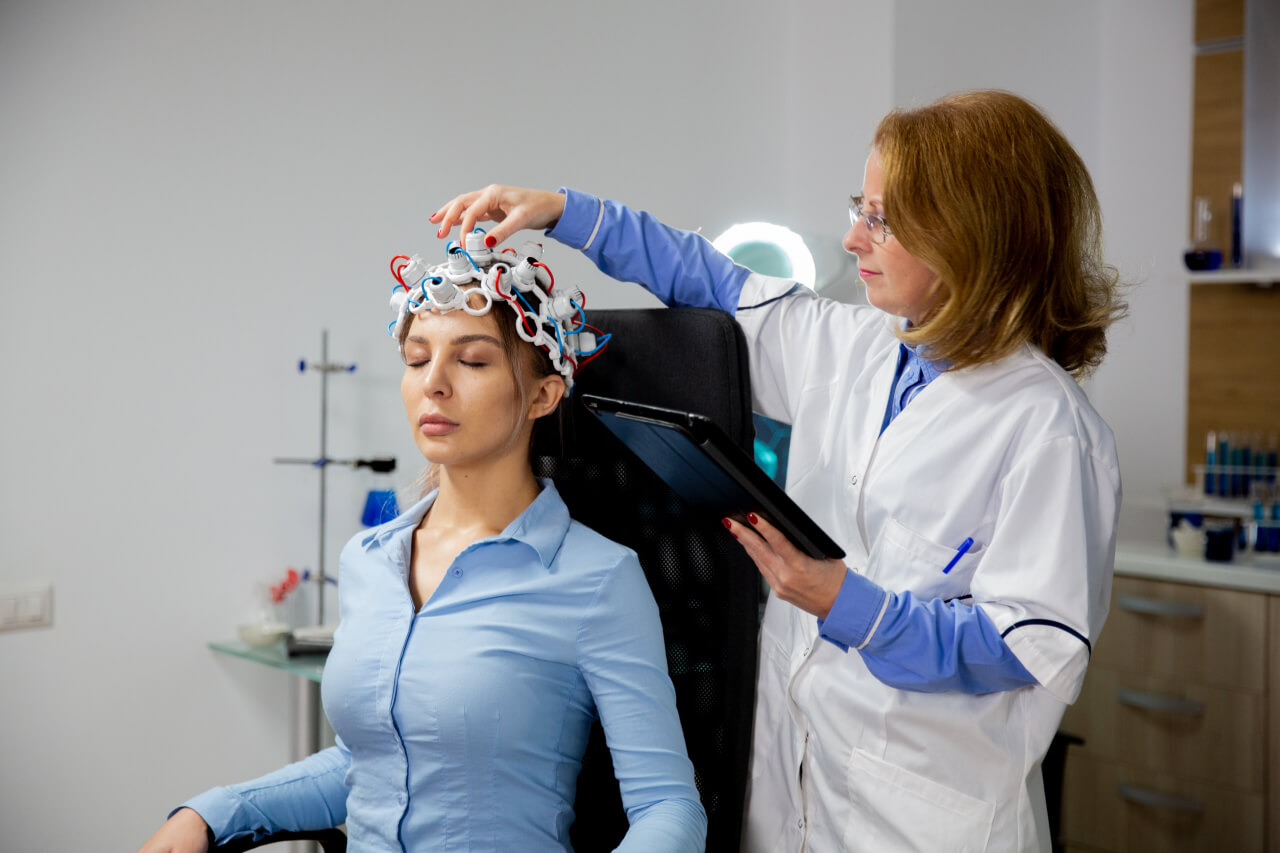Chronic pain is a condition that affects millions of people worldwide, causing persistent or recurrent pain that lasts for more than three months.
Chronic pain can have a negative impact on your physical, mental, and emotional health, interfering with your daily activities, work, and relationships.
Chronic pain can be caused by various factors, such as injuries, diseases, nerve damage, inflammation, or stress.
Sometimes, the cause of chronic pain is unknown, making it difficult to treat.
Biofeedback therapy is a natural and non-invasive technique that can help you manage chronic pain by teaching you how to control your body’s involuntary processes
Such as muscle tension, heart rate, blood pressure, and brain activity.
Biofeedback therapy can help you reduce pain, inflammation, stress, and anxiety, and improve your mood, sleep, and quality of life.
In this article, we will explain what biofeedback therapy is, how it works, and how it can help chronic pain.
We will also provide some tips and precautions for using biofeedback therapy safely and effectively.
What is Biofeedback Therapy?
Biofeedback therapy is a type of therapy that uses sensors attached to your body to measure and display your physiological responses
Such as
- Muscle activity
- Skin temperature
- Heart rate
- Blood pressure
- Brain waves
- Breathing
By observing these responses on a monitor, you can learn how to modify them using various techniques, such as relaxation, breathing, visualization, or meditation.
The goal of biofeedback therapy is to help you gain more awareness and control over your body’s functions, and to use this control to improve your health and well-being.
Biofeedback therapy can be used to treat a variety of conditions, such as chronic pain, headaches, migraines, fibromyalgia, irritable bowel syndrome, anxiety, depression, insomnia, high blood pressure, and more.
Biofeedback therapy can also be used to enhance performance, such as sports, music, or learning.
Biofeedback therapy is often combined with other therapies, such as cognitive-behavioral therapy, physical therapy, or medication, to achieve optimal results.
There are different types of biofeedback therapy, depending on the type of sensors and feedback used.
Some of the most common types are:
Electromyography (EMG) biofeedback
This type of biofeedback measures the electrical activity of your muscles, and helps you learn how to relax or contract them.
EMG biofeedback can be useful for chronic pain caused by muscle tension, spasms, or weakness, such as back pain, neck pain, or TMJ disorder.
Thermal biofeedback
This type of biofeedback measures the temperature of your skin, and helps you learn how to increase or decrease it.
Thermal biofeedback can be useful for chronic pain caused by poor blood circulation, such as Raynaud’s disease, or by stress, such as headaches or migraines.
Heart rate variability (HRV) biofeedback
This type of biofeedback measures the variation in the time intervals between your heartbeats, and helps you learn how to regulate it.
HRV biofeedback can be useful for chronic pain caused by stress, anxiety, or inflammation, such as fibromyalgia, arthritis, or irritable bowel syndrome.
Electroencephalography (EEG) biofeedback
This type of biofeedback measures the electrical activity of your brain, and helps you learn how to change it.
EEG biofeedback can be useful for chronic pain caused by neurological disorders, such as neuropathy, phantom limb pain, or complex regional pain syndrome.
What is Chronic Pain?
Chronic pain is a condition that causes persistent or recurrent pain that lasts for more than three months, or beyond the normal healing time of an injury or illness.
Chronic pain can affect any part of your body, and can range from mild to severe, from dull to sharp, from constant to intermittent.
Chronic pain can have various effects on your physical, mental, and emotional health, such as:
– Reduced mobility and function
– Increased fatigue and sleep problems
– Decreased appetite and weight loss
– Impaired concentration and memory
– Lowered mood and self-esteem
– Increased stress and anxiety
– Isolation and social withdrawal
– Dependency on medication or substances
– Increased risk of depression and suicide
Chronic pain can be classified into two main types
Depending on the source and mechanism of pain:
Nociceptive pain
This type of pain is caused by damage or inflammation of the tissues, such as the skin, muscles, bones, or organs.
Nociceptive pain is usually triggered by an injury, infection, or disease, and is often described as aching, throbbing, or stabbing.
Examples of nociceptive pain are:
- Arthritis
- dental pain
- post-surgical pain
Neuropathic pain
This type of pain is caused by damage or dysfunction of the nerves, spinal cord, or brain.
Neuropathic pain is usually not triggered by an external stimulus, but by abnormal signals from the nervous system.
Neuropathic pain is often described as burning, tingling, numbness, or electric shocks.
Examples of neuropathic pain are:
- diabetic neuropathy
- Sciatica
- Trigeminal neuralgia
What are the Symptoms and Causes of Chronic Pain?
The symptoms of chronic pain vary depending on the type, location, and severity of pain.
As well as the individual’s perception and tolerance of pain.
Some of the common symptoms of chronic pain are:
– Pain that lasts longer than three months, or beyond the normal healing time
– Pain that does not respond to usual treatments, such as medication, rest, or ice
– Pain that interferes with your daily activities, work, or relationships
– Pain that affects your mood, sleep, appetite, or energy level
– Pain that causes you to feel depressed, anxious, angry, or hopeless
The causes of chronic pain are not always clear, and may involve multiple factors, such as:
– Physical factors, such as injuries, diseases, infections, inflammation, nerve damage, or aging
– Psychological factors, such as stress, anxiety, depression, trauma, or coping skills
– Environmental factors, such as weather, temperature, humidity, or pollution
– Genetic factors, such as family history, predisposition, or sensitivity to pain
– Lifestyle factors, such as diet, exercise, smoking, alcohol, or drug use
How Can Biofeedback Therapy Help Chronic Pain?
Biofeedback therapy can help chronic pain by teaching you how to control your body’s involuntary processes, such as:
- Muscle tension
- Heart rate
- Blood pressure
- Brain activity
That are involved in the pain response.
By learning how to modify these processes, you can reduce pain, inflammation, stress, and anxiety, and improve your mood, sleep, and quality of life.
Biofeedback therapy can also help you cope with chronic pain by enhancing your awareness, relaxation, and self-efficacy.
Biofeedback therapy can help chronic pain in different ways
Depending on the type of biofeedback and the type of pain.
For example:
– EMG biofeedback can help you relax your muscles, and reduce pain caused by muscle tension, spasms, or weakness, such as back pain, neck pain, or TMJ disorder.
– Thermal biofeedback can help you increase your blood circulation, and reduce pain caused by poor blood flow, such as Raynaud’s disease, or by stress, such as headaches or migraines.
– HRV biofeedback can help you regulate your heart rate and blood pressure, and reduce pain caused by stress, anxiety, or inflammation, such as fibromyalgia, arthritis, or irritable bowel syndrome.
– EEG biofeedback can help you change your brain activity, and reduce pain caused by neurological disorders, such as neuropathy, phantom limb pain, or complex regional pain syndrome.
Biofeedback therapy can also help you prevent or reduce the frequency and intensity of chronic pain episodes.
By teaching you how to recognize and avoid the triggers, such as stress, anxiety, or certain foods or drinks, that can worsen your pain.
Biofeedback therapy can also help you manage the negative emotions, such as depression, anger, or hopelessness, that can accompany chronic pain, by teaching you how to calm your mind and body, and improve your mood and self-esteem.
Conclusion
Chronic pain is a condition that causes persistent or recurrent pain that lasts for more than three months, or beyond the normal healing time of an injury or illness.
Chronic pain can have various causes and effects, and can be difficult to treat.
Biofeedback therapy is a natural and non-invasive technique that can help you manage chronic pain by teaching you how to control your body’s involuntary processes.
Such as muscle tension, heart rate, blood pressure, and brain activity, that are involved in the pain response.
Biofeedback therapy can help you reduce pain, inflammation, stress, and anxiety, and improve your mood, sleep, and quality of life.
Biofeedback therapy can also help you cope with chronic pain by enhancing your awareness, relaxation, and self-efficacy.
Biofeedback therapy can be used to treat different types of chronic pain, such as:
Nociceptive pain or neuropathic pain, depending on the type of biofeedback and the type of pain.
Biofeedback therapy can also be used to prevent or reduce the frequency and intensity of chronic pain episodes.
By teaching you how to recognize and avoid the triggers, and manage the negative emotions, that can worsen your pain.
Biofeedback therapy can be combined with other therapies, such as cognitive-behavioral therapy, physical therapy, or medication, to achieve optimal results.
FAQs
What is biofeedback therapy, and how does it work for chronic pain?
Biofeedback therapy is a non-invasive technique that helps individuals gain awareness and control over physiological functions.
For chronic pain, sensors measure bodily functions like heart rate, muscle tension, and skin temperature.
Through visual or auditory feedback, patients learn to regulate these functions, reducing pain perception and promoting relaxation.
Is biofeedback therapy effective for all types of chronic pain?
While biofeedback can benefit various chronic pain conditions, its effectiveness may vary.
It has shown success in managing headaches, migraines, fibromyalgia, and musculoskeletal pain.
The key lies in personalized treatment plans tailored to each individual’s specific pain challenges.
Are the effects of biofeedback therapy long-lasting for chronic pain sufferers?
Many individuals experience long-term benefits from biofeedback therapy.
By learning self-regulation techniques during sessions, patients can apply these skills independently to manage pain in their daily lives.
Consistent practice often leads to lasting improvements.
What should I expect during a biofeedback therapy session for chronic pain?
A typical session involves attaching sensors to measure physiological responses.
The therapist then guides you through relaxation techniques while providing real-time feedback on the monitored parameters.
Over time, you’ll develop the ability to control these responses, contributing to pain relief.
Are there any risks or side effects associated with biofeedback therapy?
Biofeedback therapy is generally considered safe with minimal risks.
Some individuals may experience mild skin irritation from sensor attachment.
It’s crucial to work with a qualified practitioner who can tailor the therapy to your specific needs and address any concerns.
Can biofeedback therapy be used in conjunction with other pain management treatments?
Yes, biofeedback therapy is often part of a comprehensive pain management approach.
Combining it with other treatments like medication, physical therapy, or lifestyle adjustments can enhance overall effectiveness.
Consult with your healthcare team to create a well-rounded pain management plan.





